AirPods Pro 2 vs Bose QuietComfort Earbuds II: which earbuds are best for you?
We put two big noise-cancelling earbuds head to head, to help you choose
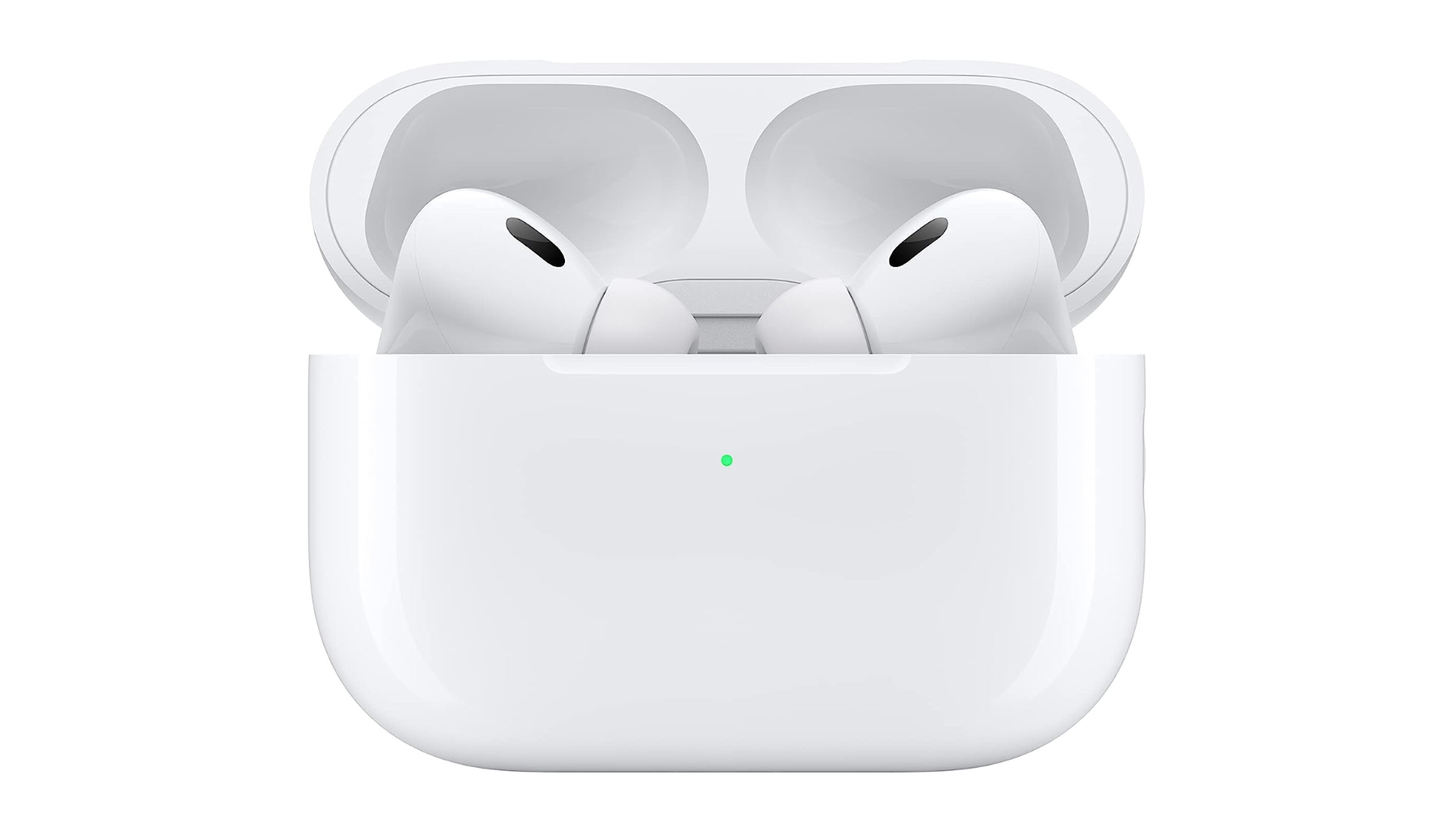
Battery (buds): 6hrs
Weight (bud): 5.2g
Spatial audio: Yes
Water resistance: IPX4
Apple's flagship earbuds feature very strong active noise cancellation and an excellent and energetic sound – though the Bose arguably have them beat on both counts by a hair. But the AirPods are much smaller and lighter, and have smarter features overall for Apple users, including auto-switching between devices, Dolby Atmos spatial audio, and perhaps most importantly Find My support, for the buds and case, so you basically can't lose them. But only for the Apple-ensconced, of course.
For
- Much smaller and lighter
- Unloseable case
- Auto switching between Apple devices
Against
- Noise cancellation is slightly weaker
- Extra features are Apple-exclusive
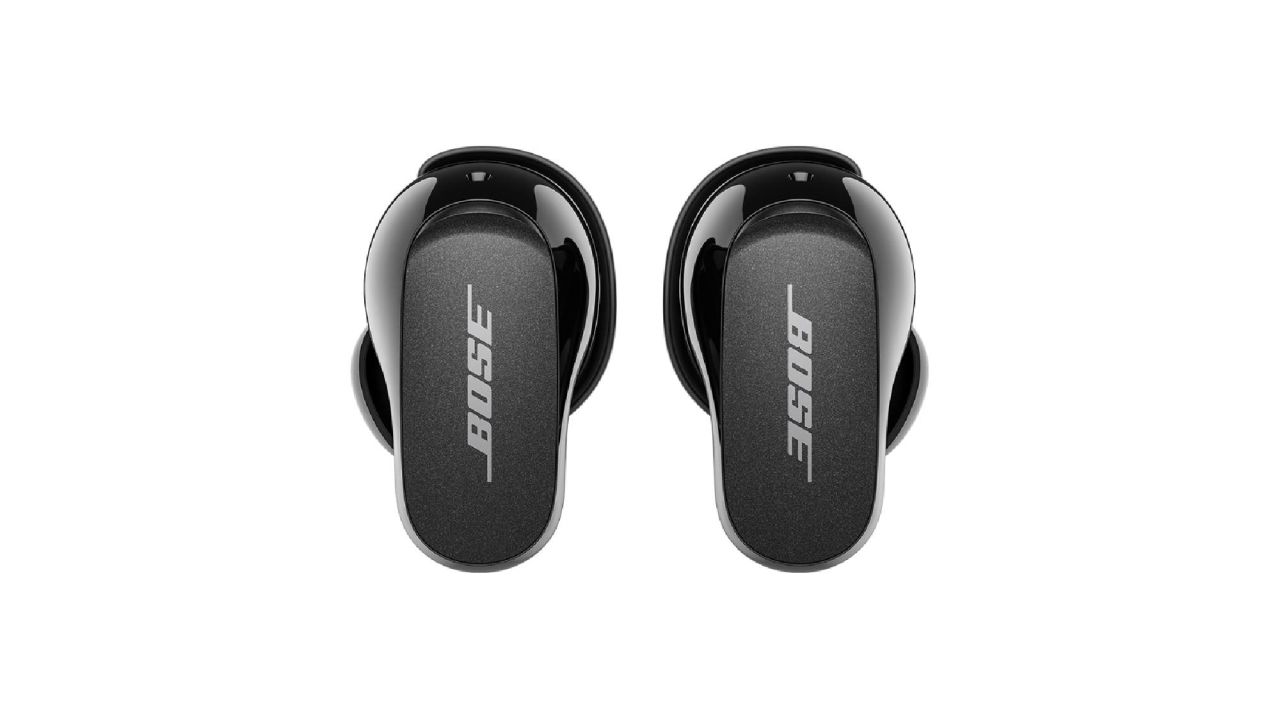
Battery (buds): 6hrs
Weight (bud): 6.24g
Spatial Audio: No
Water resistance: IPX4
These Bose buds offer slightly better active noise cancellation than the AirPods, and arguably better sound. We also love the ability to create custom levels of noise cancellation for different environments in easy presets, because you don't always need it on full all the time. But not everyone will love their larger size and solid in-ear fit, nor the hefty case that comes with that. And they're pretty basic for features beyond the customizability, although at least they're equal on iPhone and Android.
For
- Slight better noise cancellation
- Adjustable ANC profiles
- Android & iOS apps
Against
- No multi-point pairing
- No spatial audio
- Bigger and heavier
If you're looking at elite earbuds today, the question of AirPods Pro 2 vs Bose QuietComfort Earbuds II might come up – especially if active noise cancellation is a priority.
Both Bose QuietComfort Earbuds II and AirPods Pro 2 feature among the best noise-cancelling earbuds, and offer some of the best sound-stopping power you can get today. But each of them offers a bunch of features that the other doesn't, and can now be found for very similar prices a lot of the time, so the differences are important and useful to know.
You can read our in-depth AirPods Pro 2 review or Bose QuietComfort Earbuds II review if you want to get really in-depth with either of them, but here we'll run you through everything you need to know about two of the best wireless earbuds available today before buying.
AirPods Pro 2 vs Bose QuietComfort Earbuds II: price and release date
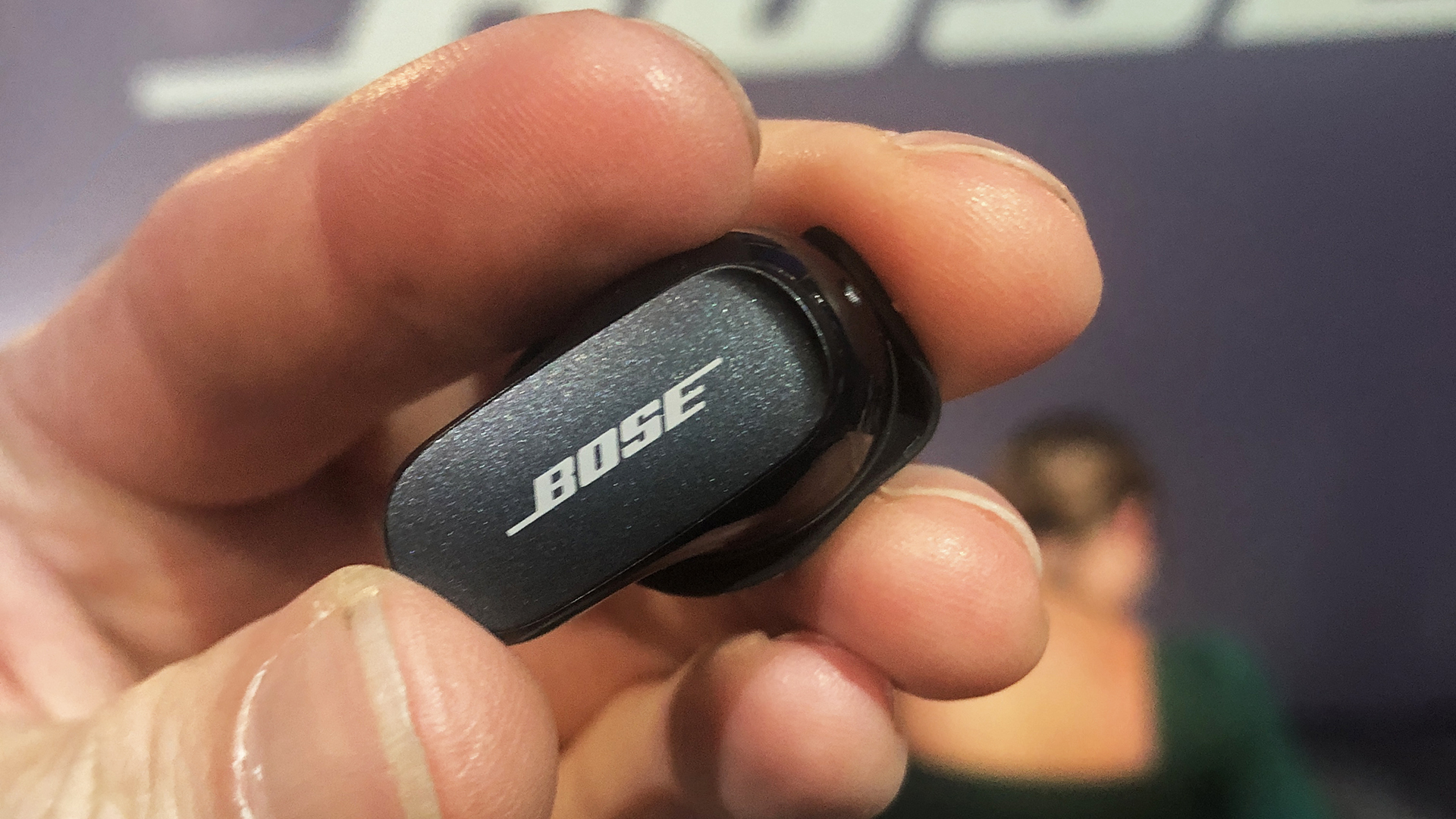
The Bose QuietComfort Earbuds II were released on September 29, 2022. They're officially priced at $299 / £279 / AU$429 – however, because the newer Bose QuietComfort Ultra Earbuds have now been released at a similarly premium price, the price of the Earbuds II has fallen a lot. You'll still find them officially listed for the price above, but in practice they're regularly available for $199 / £199 / AU$300. It's worth looking at any Bose promo codes to bring the price down, too.
AirPods Pro 2 originally launched on September 23, 2022, though a newer version with USB-C charging instead of Lightning replaced this model on September 22, 2023. There were no meaningful other changes to the model for most users (they also add special lossless support for Apple Vision Pro, but that's not exactly a mainstream bonus feature…).
Officially, AirPods Pro 2 cost $249 / £229 / AU$399 – but again, they regularly available with discounts, bringing them down to more like $189 / £199 / AU$350.
It means that if you're buying smart, there's very little price difference between the two earbuds now.
Get daily insight, inspiration and deals in your inbox
Sign up for breaking news, reviews, opinion, top tech deals, and more.
AirPods Pro 2 vs Bose QuietComfort Earbuds II: features
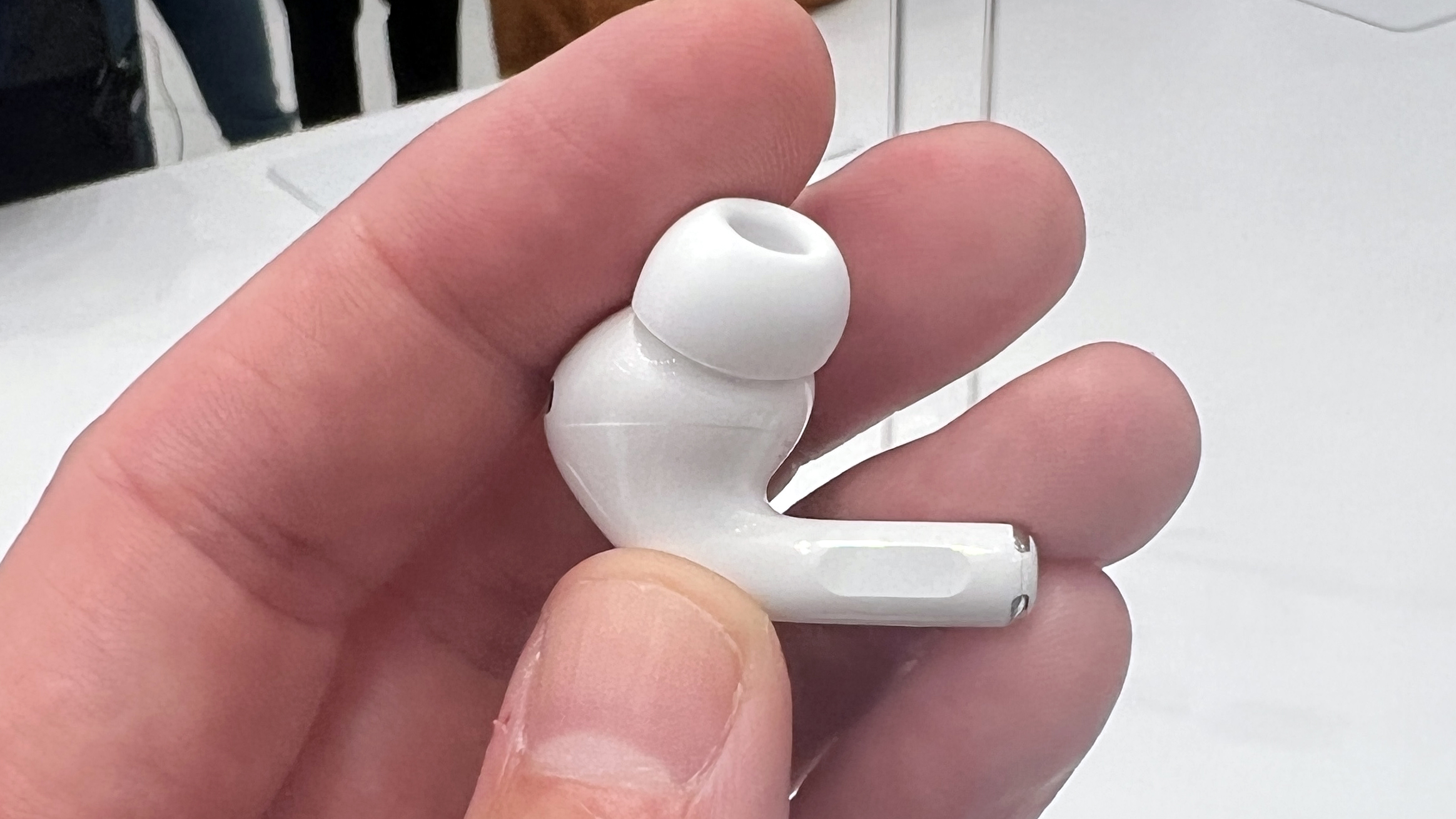
First and foremost, both of these earbuds offer active noise cancelling, to nobody's surprise. They also both offer a hear-through transparency mode for when you need clear sound of what's around you. And they both offer a mode that's a smart mix of these two. In the Bose, this is 'Aware Mode with ActiveSense', a smarter transparency mode that responds instantly to sudden sounds to protect your hearing. In AirPods Pro 2, it's called 'Adaptive Transparency', which claims to dynamically reduces heavy noise, with readings of your environment taken 48,000 times per second.
Both sets of earbuds also feature touch-based controls that you can use to change sound modes, play/pause music, and change volume. On AirPods, this is done by squeezing or swiping the sticks, and the squeeze part works if you have gloves on, which is useful. On Bose, it's all touch/swiping control, which means they need your skin in contact.
Neither set of earbuds supports higher-res music streaming – Bose has said it would add aptX/Snapdragon Sound in an update to its buds, but this still hasn't appeared.
And lastly in terms of things the buds share, the AirPods and Bose both promise the same six-hour battery life from the earbuds, though Bose promises 24 hours of further use from the case, while Apple promises 30 hours (ie, one extra charge).
The AirPods offer more flexibility in how you charge them, though – they offer USB-C, Qi wireless charging, Apple's MagSafe wireless charging, and can even be charged from the Apple Watch's mini wireless charger. The Bose can only be charged by USB-C.
As with all AirPods models, AirPods Pro 2 are crammed with smart features that are basically all only available if you use an iPhone and (ideally) all other Apple devices. For a start, the AirPods will auto-switch between your devices if you move from one to another and need to listen to something, with no effort from you, which is really useful. The Bose lack any feature like this, because they don't support multi-point Bluetooth pairing (and the newer Bose QuietComfort Ultra Earbuds do not add this).
The AirPods also offer instant pairing with Apple devices, and perhaps most reassuringly they have clever support for Apple's Find My network in the earbuds and the case. It means that if you drop one somewhere, you can be informed of where it is whenever someone with an iPhone passes near it. And the case has an ultra-wideband chip that means your iPhone can literally point you towards it if it's lost. The case also has a speaker in, so you can tell it to make noise to aid locating it. The Bose earbuds lack any of this.
You can also share audio from one pair of AirPods to another pair – not a commonly used feature, but potentially useful when travelling to share watching a movie on an iPad. Again, the Bose lack a similar feature.
Finally for Apple-exclusive features, the AirPods support head-tracked spatial audio (including a way to personalize this to your head, to make it extra precise), which makes it feel like you're listening to surround-sound speaker system rather than having music pumped right into your ears. It's incredibly effective, especially with Dolby Atmos music or movies, and is absolutely a selling point of these buds if you watch movies on your iPhone or iPad a lot while traveling. There's no spatial audio support on the Bose, although this is feature that the latest Bose QuietComfort Ultra Earbuds do include – and it's quite something.
So that's a lot of checks in the AirPods column… though only if you have Apple gear to use with them, of course. However, the Bose earbuds have important features too, and these work on both iOS and Android.
For a start, they calibrate both sound and noise-cancellation to the unique shape of every individual ear. This ‘CustomTune’ sound calibration is activated each time the QuietComfort Earbuds II are taken from their charging case and positioned in the wearer’s ears. A proprietary tone will play and a mic inside the earbud assesses the ear canal’s acoustic response. The information is used to tailor both audio and noise-cancellation performance in under half a second, according to the company. It then adjusts the frequency response to match the terrain of your ears, with one internal and three external microphones listening for external sounds for the ANC to process. The idea is to add extra detail to songs, and to ensure that the noise cancellation is as effective as possible without disrupting the music quality. While AirPods have some sound adjustment, Bose's is at a higher level.
You can also create custom sound modes for the Bose QuietComfort Earbuds II, which is a feature we love. So, if you use them in the office, maybe you don't want the noise-cancellation at full power, because you want colleagues to be able to get your attention – but you still want the general background din reduced so you can concentrate. You can create a mode just for this, where you choose the level of ANC power. And these modes can be cycled through from the buds, so there's no hassle in choosing them. AirPods don't offer any simple modes other than the Transparency and Adaptive Transparency modes mentioned further up.
You can also easily adjust the Bose's EQ from the app, and they'll remember these settings if you switch devices; the AirPods have no equivalent EQ settings. The Bose also have a nice feature called SelfVoice, which lets you hear yourself in your own ears, so you don't end up shouting because you're not sure how clearly your voice is coming through.
AirPods Pro 2 vs Bose QuietComfort Earbuds II: Audio performance
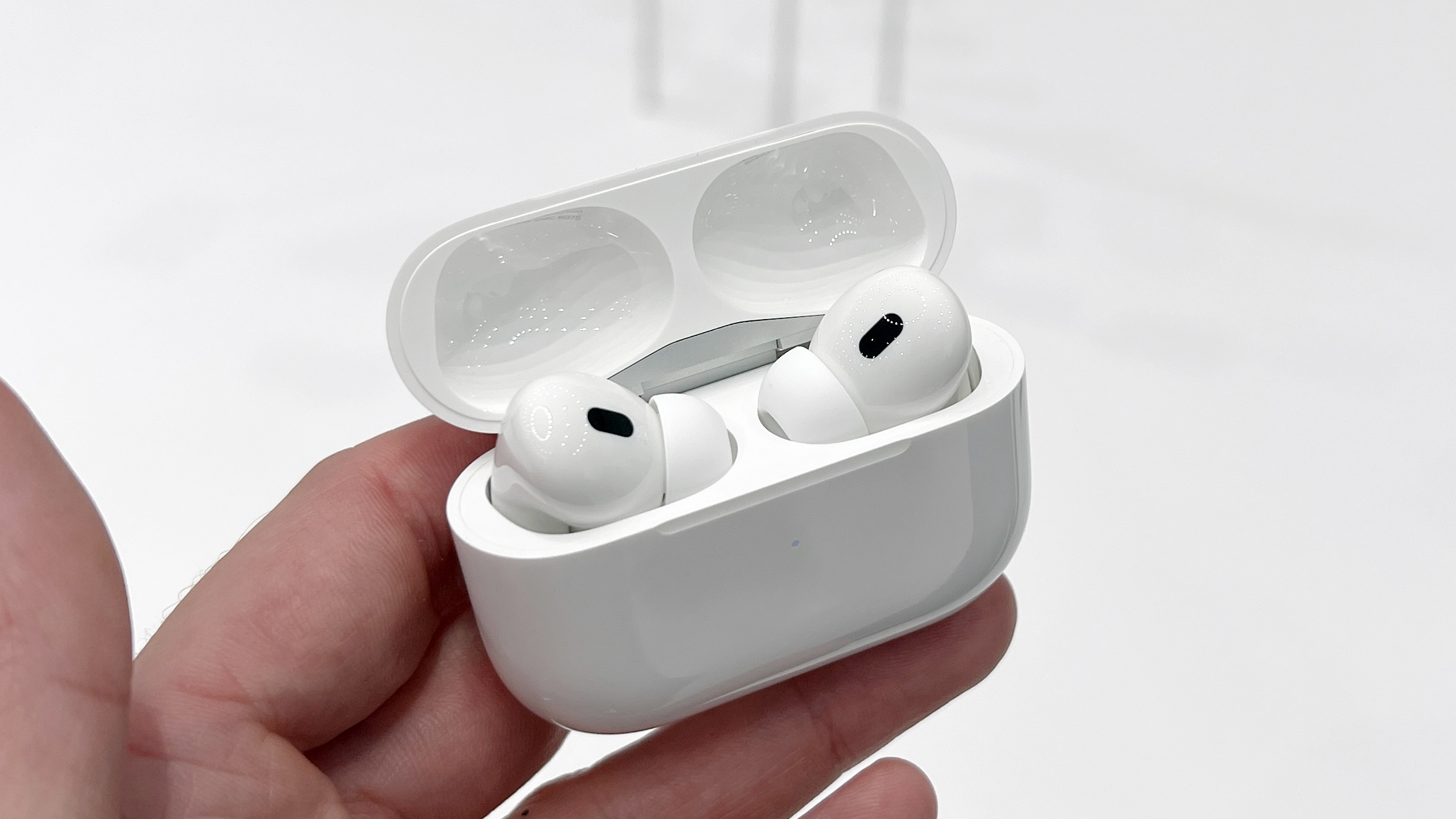
These are extremely impressive earbuds when it comes to both sound quality and active noise cancellation.
Both earbuds deliver tons of detail in the music and have a great balance, offering rich and deep bass, well-expressed mids, and clarity through the treble. In our AirPods Pro 2 review, we praised them for "a clear ability to separate out different elements in the music, a strong ability to reproduce bass, a crispness in voice especially, and all combined with excellent Spatial Audio playback."
In our Bose review, we said they're "beautifully balanced and you can pick up an exceedingly high amount of detail that wasn’t possible in the older buds. This is particularly evident when it comes to the low end, where bassy elements like kick drums and double bass get a pretty good amount of attention. For example, when listening to Miles Davis or John Coltrane you can pick out the double bass among the piano (mids) and the saxophone or cymbals. Bass drums when listening to the blues, pop or rock don’t get drowned out, with pretty much every instrument holding its own against the vocals. And at no point did the vocals get drowned out by the instruments."
We'd say it's basically a draw for music quality – you'll be happy with whichever you get.
For active noise cancellation, we would say the Bose have a marginal edge. They're basically best-in-class (the new Bose Ultra Earbuds are arguably a little better, but the difference is small enough that we don't think it's a reason to upgrade on its own) and are able to block a little more across the frequencies than AirPods Pro 2.
But let's be clear: the AirPods are no slouch in this department at all and are absolutely up on the noise-stopping podium with the Bose. They're just not the gold medal winner.
AirPods Pro 2 vs Bose QuietComfort Earbuds II: design & fit
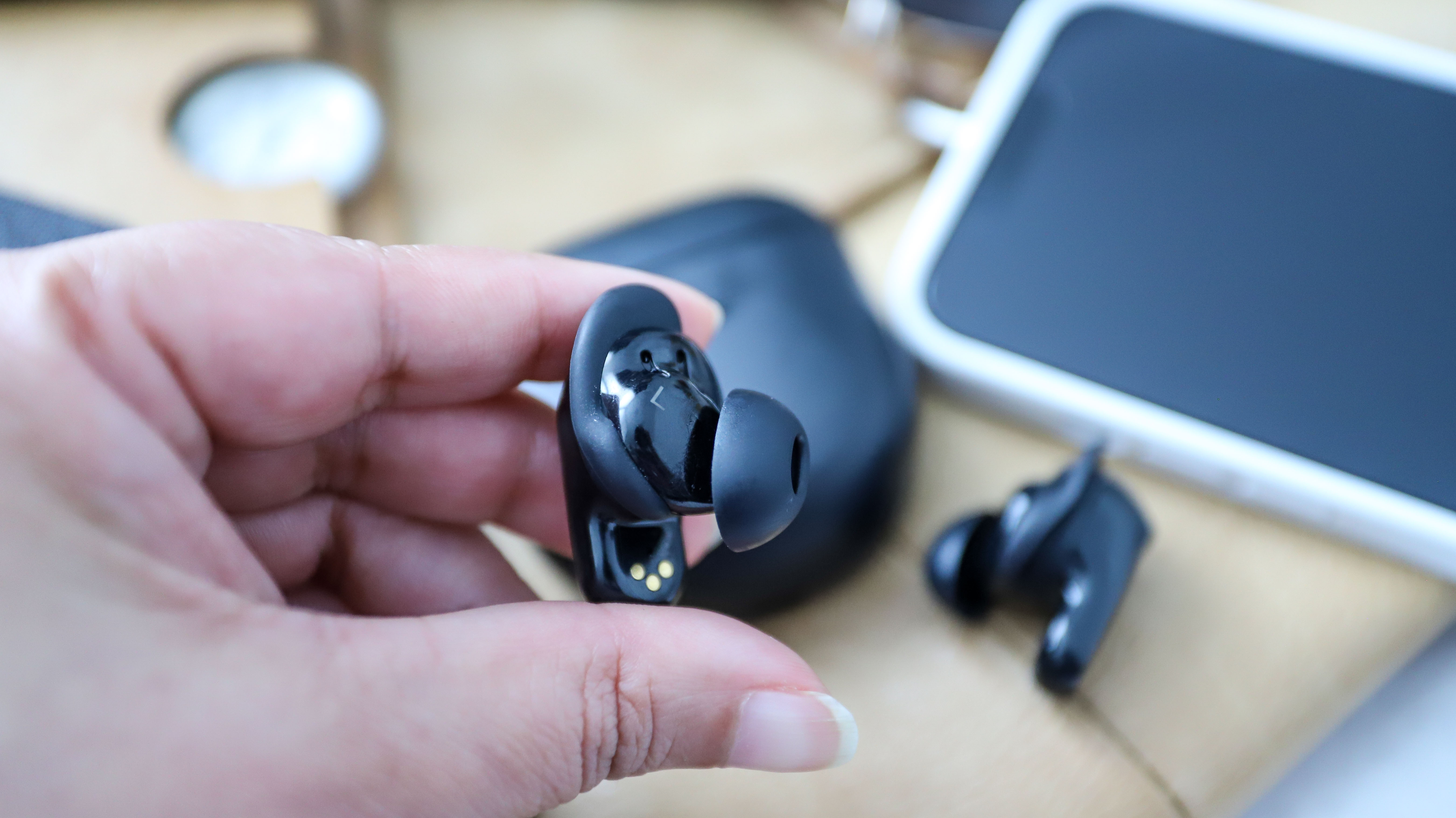
Bose has shrunk the size of the QuietComfort Earbuds II by around a third over the model they replace, and at 6.2g each they’re also much lighter. However, they're still fairly bulky compared to the AirPods, and as you can see in the picture above, they not only fit in your ear, but have a stability fin on top that sits against your ear to provide a double level of fitness security.
There are three different ear tips and three different stability bands delivering nine different fitting options for each earbud, so you can find the best, and most solid, fit for you. That's great for peace of mind, and they certainly feel solid when they're in your ear with all this… but some on team TechRadar also find it to be a bit much for a pair of daily-wear earbuds.
The AirPods weight 5.2g, and while 1g doesn't sound like much of a difference, it means the Bose are 20% heavier. It also means the AirPods don't need any extra stability to stay in your ears, so some will absolutely find them more comfortable – especially those with smaller ears.
This size difference also translates to the case of these devices. The Bose package is quite a hefty thing to slip into your trouser pockets, and you'll both feel and see it there. The svelte, small AirPods case slips way more discreetly into jeans or a jacket pocket. Obviously, this is less of a problem if you use a bag anyway.
The stick design of the AirPods continues to be mildly divisive, but one benefit it has is moving their center of gravity closer to your head, which also held keep them secure in your ear. Apple provides four sizes of in-ear tip, and you'll be prompted to take a 'fit check' test via your iPhone when get them, to ensure you're using the best size that will stay secure and keep the noise cancellation working its best.
Both earbuds offer IPX4 water resistance, so they should be fine against light sweat and inclement weather.
AirPods Pro 2 vs Bose QuietComfort Earbuds II: conclusion
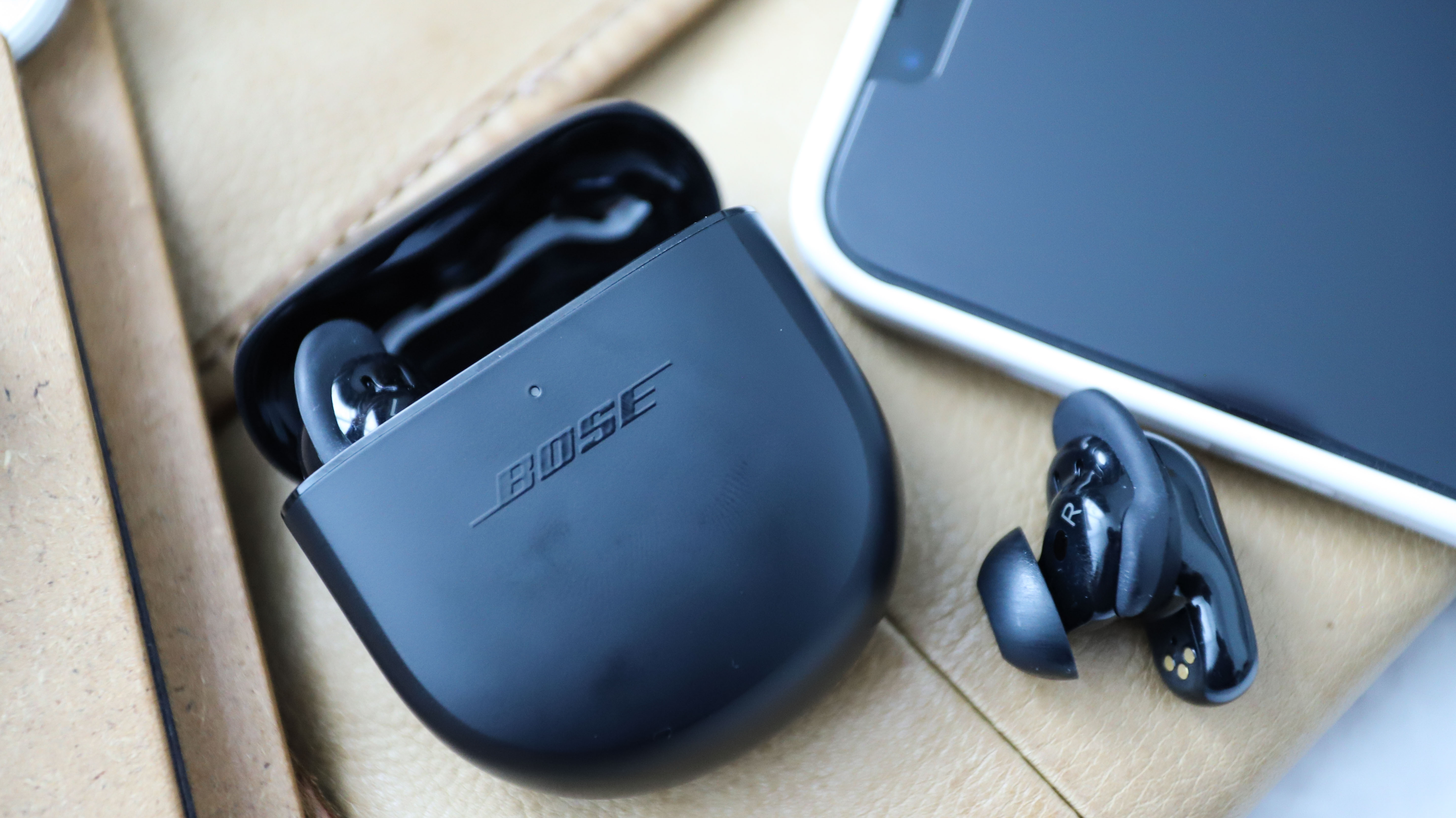
Really, this battle primarily comes down to what your phone and laptop preferences are. If you're deeply invested in Apple, the extra features of the AirPods Pro 2 – especially the auto-switching, spatial audio and reassuring Find My AirPods abilities – make them the best-value buy of the two. A slight step down in noise-stopping power is easily worth it for the slick other additions.
However, if you need more flexibility between different systems, the Bose will perhaps stand out more. They don't offer any kind of auto-switching between devices, but you can still pair them easily with different platforms, and use the Bose app on either Android or iPhone to unlock their full power and customizability.
The one wrinkle to that simple formula is the size. If you want something that's smaller and more discreet in your pocket, or that's generally smaller and lighter in the ears, you may prefer the AirPods anyway. As long as you've got an iPhone to set them up and make the most of their features, you can still pair AirPods with a Windows laptop if you need to.
Writer, broadcaster, musician and kitchen gadget obsessive Carrie Marshall has been writing about tech since 1998, contributing sage advice and odd opinions to all kinds of magazines and websites as well as writing more than a dozen books. Her memoir, Carrie Kills A Man, is on sale now and her next book, about pop music, is out in 2025. She is the singer in Glaswegian rock band Unquiet Mind.
